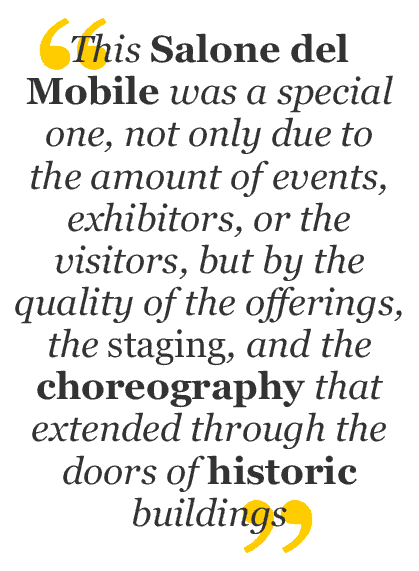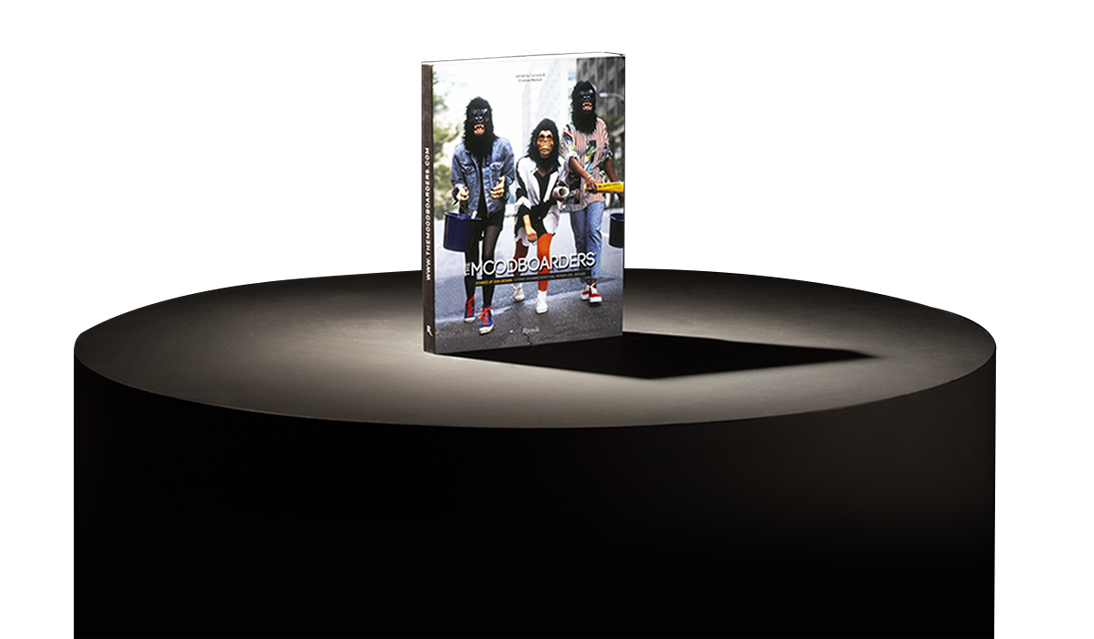It would seem like a given that The Moodboarders would recount the Salone del Mobile 2016, seeing as they deal with design in all its facets, and considering that home furnishing and accessories make up the lion’s share of Italy’s trade, second only to mechanics. For us, this time, it was a sentimental choice. This Salone del Mobile was a special one, not only due to the amount of events (1.200 throughout the city, divided between various areas) and exhibitors in the fair (around 2.200), or the visitors (37.000 just at the fair), but by the quality of the offerings, and the staging. The choreography that extended through the doors of historic buildings, once forgotten or unavailable to the public, proved that the contemporary can be emphasized by historic surroundings, and how classic can unite with modernity. It was made even more special thanks to the coinciding XXI Triennale series of momentous exhibitions, including Andrea Branzi and Kenya Hara’s “Neo Preistoria”. It included the welcoming of the new design companies, Qeeboo and Ghidini 1961, which we will speak of at-length in up-coming issues. For anyone who complains of creative decline, all they have to do is examine the new talents, whose imagination and at times, irony, are making design less haughty, and more accessible and playful. Talents is the first of a series of reportages and reflections from the sidelines of this past Salone del Mobile. It convinced even the overly skeptical (British journalists) that Milan should be considered the place to be, where there is a breath of fresh, innovative air, similar to the radical movement narrated in the book, “Poltrona Backstage”, (which was dedicated to the iconic pieces of historic Tuscan company), presented in the “Domestic Icons” exhibition in Milan. Director James McLachlan writes of this inventive energy and gives Milan’s design week its due credit in his editorial for design magazine, Icon.
N.33 of May 5th, 2016
Talents
It would seem like a given that The Moodboarders would recount the Salone del Mobile 2016, seeing as they deal with design in all its facets, and considering that home furnishing and accessories make up the lion’s share of Italy’s trade, second only to mechanics. For us, this time, it was a sentimental choice. This Salone del Mobile was a special one, not only due to the amount of events (1.200 throughout the city, divided between various areas) and exhibitors in the fair (around 2.200), or the visitors (37.000 just at the fair), but by the quality of the offerings, and the staging. The choreography that extended through the doors of historic buildings, once forgotten or unavailable to the public, proved that the contemporary can be emphasized by historic surroundings, and how classic can unite with modernity. It was made even more special thanks to the coinciding XXI Triennale series of momentous exhibitions, including Andrea Branzi and Kenya Hara’s “Neo Preistoria”. It included the welcoming of the new design companies, Qeeboo and Ghidini 1961, which we will speak of at-length in up-coming issues. For anyone who complains of creative decline, all they have to do is examine the new talents, whose imagination and at times, irony, are making design less haughty, and more accessible and playful. Talents is the first of a series of reportages and reflections from the sidelines of this past Salone del Mobile. It convinced even the overly skeptical (British journalists) that Milan should be considered the place to be, where there is a breath of fresh, innovative air, similar to the radical movement narrated in the book, “Poltrona Backstage”, (which was dedicated to the iconic pieces of historic Tuscan company), presented in the “Domestic Icons” exhibition in Milan. Director James McLachlan writes of this inventive energy and gives Milan’s design week its due credit in his editorial for design magazine, Icon.
Cristina Morozzi
Editor-in-chief
editor@themoodboarders.com/old





